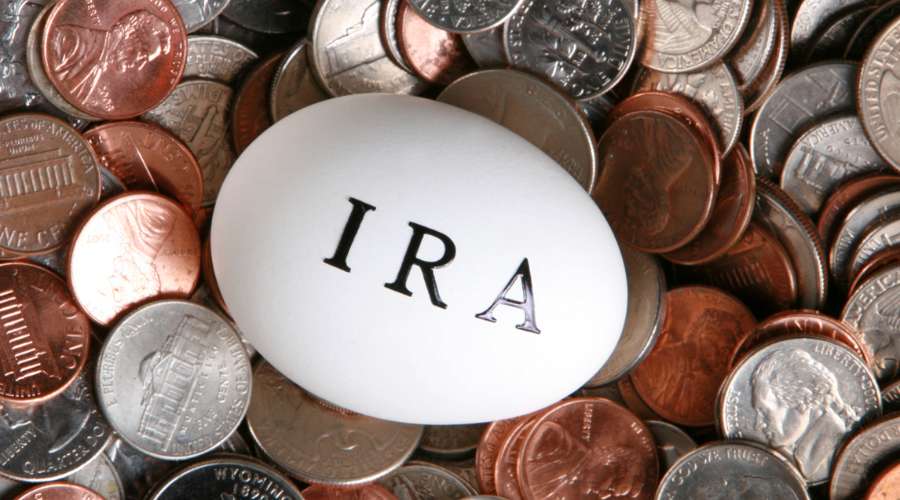Gold has long been viewed as a safe-haven investment, with its value remaining relatively stable over time. But how much gold can you buy before it is reported to the government? This is an important question to ask if you're looking to invest in gold, as certain reporting requirements must be met when investing in this precious metal.
Knowing the limits on how much gold you can buy before it is reported to the government can help you make informed decisions when investing. This article will discuss the various reporting requirements for gold purchases and how much gold you can buy before it is reported to the government. We'll also provide tips on how to stay within the reporting limits and remain in compliance with the law.
If you are interested in investing, make sure to take a look at our highest recommended companies for this year!
>> Click Here For A List Of The 5 Highest Recommended Precious Metals Investment Companies <<
Brief About Gold

Gold is one of the oldest and most sought-after metals in human history. It's held a special place in our hearts and wallets for centuries and remains an important commodity today.
Gold is a soft, yellow metal that is highly malleable, which means it can be shaped into thin sheets or wires without breaking. It's also one of the few metals that don't corrode over time and are highly resistant to oxidation.
Gold is usually traded as a commodity on the international market. As a precious metal, it has many industrial uses including jewelry, electronics, dentistry, and coins. It's also used in many religions as a symbol of wealth and prosperity.
Gold is also used in medicine and technology, as it is a great conductor of heat and electricity. Its ability to reflect infrared radiation makes it especially useful in satellite communications.
Gold is also known for its beauty, which has made it a popular choice for jewelry for generations. Its soft luster and natural color make it a timeless classic.
Why Is Gold a Popular Investment?
Gold is an incredibly popular investment choice for many reasons—from its long-term value to its versatility. Here are just a few of the reasons why gold is such a sought-after asset:
What Are the Tax Implications of Selling Physical Gold?

The Internal Revenue Service (IRS) recognizes gold, silver, platinum, palladium, and titanium held in physical form as capital assets classed as collectibles.
Any gains made on the sale or exchange of precious metals are subject to capital gains taxation, even if the metals are held in the form of bullion coins, bullion bars, rare coinage, or ingots. In this case, the capital gains tax is only due after the sale of the investment and only if the investment was held for longer than a year.
In contrast to the capital gains tax rates that apply to the sale of numerous tradable financial products like stocks, mutual funds, and ETFs, a different set of rules applies to selling actual precious metals.
Holdings of gold and silver in physical form are subject to a capital gains tax at a rate equivalent to the investor's tax rate, up to a maximum of 28%. This reduces the effective tax rate on the sale of physical precious metals to 28% for those in the 33%, 35%, and 39.6% tax brackets.
Gains on the sale of precious metals held for less than a year are taxed at the individual's standard rate.
Gold Purchases That Must Be Reported
Many coins are out there, and many promoters will tell you that their coins are exempt from "reporting." To make such claims would suggest that reporting gold transactions is required by the government.
To be clear, no laws mandate the disclosure of any precious metal acquisitions. However, if more than $10,000 is paid in cash, the transaction is considered a "cash reporting transaction." Instead of gold, the government is more interested in cash. All cash transactions above $10,000 in business must be reported.
According to the Form 8300 Official General Instructions, "Who Must File - Each person engaged in a trade or business who, during that trade or business, receives more than $10,000 in cash in one transaction or two or more related transactions." This guideline applies to those receiving more than $10,000 in cash in single or two related transactions.
"related transactions" refers to two transactions within 24 hours involving the same payer (or its agent) and the same recipient.
This rule is for actual cash, as in dollars or other paper currency. No personal checks, wire transfers, or withdrawals from money markets are affected. Cash reporting may be triggered when money orders or cashier's checks are used.
The General Instructions for Form 8300 provide that cash can be "a cashier's check, bank draft, traveler's check, or money order having a face amount of not more than $10,000." Using a cashier's check for an amount under $10,000 is considered a "cash transaction," but it does not have to be reported because it is less than $10,000.
However, if you use two cashier's checks totaling over $10,000 for a single purchase, even though each check is less than $10,000 individually, the entire amount must be reported as cash.
Personal checks and bank drafts are not considered cash. The General Instructions for Form 8300 state, "cash does not include a check drawn on the payer's account, such as a personal check," even if the amount of the check is cash.
Related Transactions

As was previously indicated, purchasing precious metals is also considered reportable if it occurs within 24 hours. Those acquisitions share a common denominator; thus, the paperwork labels them "related transactions."
If a consumer spent $8,000 in cash at a local coin store and returned 3 hours later to spend another $3,000 in cash, the coin dealer would be required to disclose both transactions because they were related.
Another example is a client who makes two distinct online purchases totaling $5,000 and $6,000 by bank drafts within 24 hours; both of these purchases would be considered related transactions and require reporting.
Certain dishonest coin dealers and clients may seek to evade this policy by scattering payments across multiple days to ensure that none of the payments match the reporting criterion.
"Illegal structuring" refers to breaking the law to launder money. The bank will undoubtedly note if a customer routinely pays for precious metals with multiple checks. The customer and the coin vendor might face criminal penalties if the bank learns of these transactions and closes the account.
Disclosure by Banks
It's a common misconception that any personal check over $10,000 must be reported to the authorities. No, financial institutions do not. If the cash transaction amount is over $10,000, the bank must complete a Cash Transaction Report (CTR) and submit it to the appropriate authorities.
A person may be required to disclose a cash deposit to their account at any bank or other financial institution of more than $10,000.
However, banks must fill out Monetary Instrument Reports for cashier's check acquisitions between $3,000 and $10,000. (MIRs). These records are kept by some financial institutions and are referred to as "Monetary Instrument Logs."
Banks use MIRs, which are not lodged with the government, to fulfill cash reporting requirements. It's unclear whether a MIR necessitates a CTR, but someone who frequently buys cashier's checks between $3,000 and $10,000 should fill one out and file it.
A customer will be aware of a monetary transaction if the company reports it. Name, residence, citizenship status, and SSN are needed to complete Form 8300. Identification details like driver's license number, passport number, and so on are also required.
Furthermore, the General Instructions for Form 8300 indicate that "deliver a written statement to each individual listed in a required Form 8300 on or before January 31 of the year following the calendar year in which the cash is received."
Last, if the dealings seem "suspicious," you can check a box on Form 8300 General Instructions. If the buyer spends less than $10,000 and the buyer suspects that they are trying to avoid cash reporting, they can check this box.
Nobody wants to raise any red flags with the Internal Revenue Service. To prevent their clients from thinking clearly, dishonest dealers often use the threat of "reporting" to instill panic.
As a result, they might charge excessive prices for the coins they offer for sale. Investors rationalize paying more by saying they are acquiring "non-reportable gold." Nobody should take advantage of an investor like that.
Investing in Gold Through a Gold IRA

A gold IRA, also known as a precious metals IRA, is an investment account that allows you to diversify your retirement portfolio with physical gold, silver, and other precious metals. A self-directed IRA allows you to make your own investment decisions without the guidance of a traditional financial advisor.
With a self-directed IRA, you can decide which investments to make in your account, including gold and silver coins, bullion, and bars. This can help you diversify your retirement savings while providing the potential for long-term growth and stability.
It's important to note that only certain types of gold are allowed in a gold IRA. The gold must meet the minimum fineness requirements of 99.5% pure gold. Anything lower than this is not acceptable for inclusion in a gold IRA.
The US Mint produces American Eagle Gold Bullion Coins, which the IRS approves for inclusion in gold IRAs. The American Eagle Gold Bullion Coins come in four sizes – 1/10 oz, ¼ oz, ½ oz and 1 oz. Additionally, the Canadian Maple Leaf, South African Krugerrand, and Austrian Philharmonic coins all meet the IRS fineness requirements and can also be included in your gold IRA.
The IRS also allows certain types of gold bars to be included in a gold IRA as long as they meet their fineness requirements. Gold bars must be at least 99.5% pure and marked with a serial number and the refiner's name. The weight of the bar must also be stamped onto it.
Types of Gold IRA Accounts
There are three main types of gold IRA accounts available: Roth, Traditional, and SEP gold IRAs.
With a Roth IRA, you make after-tax contributions, so all withdrawals are tax-free. You can also use existing funds in your Roth IRA to purchase gold and other precious metals.
A traditional gold IRA is a retirement account where your contributions are made with after-tax dollars and your investments grow tax-deferred. You'll pay taxes on your withdrawals in retirement, but you won't pay taxes on the growth of your investments while they are held in the account.
A SEP Gold IRA is a retirement account for self-employed individuals and small business owners. It works similarly to a traditional gold IRA but with some added benefits. For example, with a SEP Gold IRA, you can make higher contributions than a conventional gold IRA and have more flexibility regarding how you invest your money.
Funding a Gold IRA

There are three main ways to fund your gold IRA.
Completing IRA Transfer
An IRA transfer moves funds from an existing IRA account into a new one. This is an excellent option if you already have retirement savings and want to diversify your portfolio with gold.
To complete an IRA transfer, you'll need to contact the custodian of your current IRA account and request an IRA transfer form. You'll then fill out the form indicating that you want to transfer funds from your existing account to the gold IRA.
Once you've completed the form, you'll need to send it back to the custodian and wait for them to process the transfer. Depending on your custodian, this process can take anywhere from a few days to a few weeks.
Performing a Rollover
A rollover is when you transfer funds from an existing retirement account (such as a 401(k) or traditional IRA) into a gold IRA. There are two types of rollover - direct and indirect.
A direct rollover is when you move the money directly from one retirement account to another without taking a distribution. This allows you to avoid being taxed on the money being transferred. An indirect rollover is when you take a distribution from the existing retirement account and then redeposit the money into a new account. You have 60 days to do this for it to be considered a valid rollover.
When transferring funds from an existing retirement account to a gold IRA, follow all the rules and regulations. If you don't, you could face severe tax penalties. Talk to a financial professional to make sure you're doing it right!
Cash Contributions
If you choose to fund your gold IRA with cash, you'll have to complete the necessary paperwork with your custodian and submit it along with your payment. Your custodian will then use your cash contributions to purchase gold or other precious metals to add to your IRA.
It's important to remember that any gold you purchase must meet certain requirements as outlined by the IRS. The IRS also restricts how much money you can contribute to a gold IRA each year, so check the latest guidelines before contributing.
How Can You Open a Gold IRA Safely?
Opening a gold IRA safely is easier than you might think! It doesn't require a lot of effort, but it does require that you take the time to research and understand the process.
First, you will need to select a gold IRA custodian or administrator that meets the Internal Revenue Service's requirements for IRA investments. You will also want to research a reputable company with competitive fees and a reliable customer service team.
Next, you will need to open a new IRA account with your selected custodian. This will involve filling out some paperwork and providing additional documentation.
Once your new IRA account is set up, you will need to fund your account with cash. This can be done through direct contributions, transfers, or rollovers from other IRAs.
Finally, it's time to purchase the gold. Your custodian will provide you with a list of approved gold products. You can select the products that best match your investment goals and budget. Once purchased, your gold will be securely stored in an IRS-approved depository.
Two storage options are available for gold IRAs--segregated and non-segregated. With segregated storage, your gold is kept in a separate account from other clients' gold, while with non-segregated storage, your gold is commingled with other clients' gold.
Generally, segregated storage is more expensive than non-segregated storage, but it does offer a higher level of security. For added peace of mind, you can request your gold stored in a particular vault or location.
Whichever option you choose, you can be sure that your gold is safe and secure in the hands of the depository institution.
Final Thoughts
Gold investments have been around for centuries and have proven to be an effective way of storing and preserving wealth. However, when investing in gold, it is important to know the reporting requirements.
The government requires any cash payments over $10,000 to be reported to the IRS. That includes payments for gold and other precious metals. So, make sure you are aware of the rules when making a purchase.
For those looking for a more secure way to invest in gold, consider a gold IRA. A gold IRA allows you to invest in gold by purchasing physical gold and storing it in an IRA-approved depository. This can be a great way to add gold to your portfolio without the hassle and expense of buying, storing, and insuring physical gold.
We have compiled a list of the top-rated gold companies that offer gold IRAs. With these companies, you can find the right gold price, storage options, and the proper custodian for your gold IRA. They are all highly rated, trusted providers that can help you get the most out of your gold investments.
Don't forget to check out our top recommended companies before investing!
